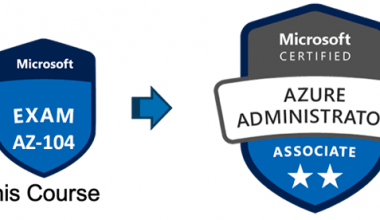ITIL (Information Technology Infrastructure Library) is a framework for IT service management (ITSM). It provides a set of best practices for managing IT services and aligning them with the needs of the business. The framework was developed in the 1980s by the United Kingdom’s Central Computer and Telecommunications Agency (CCTA) and has since been updated several times to keep pace with changes in the IT industry. Let’s take a look at some of the examples of ITIL, the processes, as well as some of the interview questions you will likely come across before getting your certification.
Understanding ITIL Framework
ITIL is based on a set of processes and functions that cover the entire service lifecycle, from service strategy and design to service operation and continual service improvement. It also defines a set of roles and responsibilities for managing IT services, including the service owner, service manager, service desk manager, and various technical and support roles.
Organizations that adopt ITIL can benefit from improved alignment between IT services and business objectives, increased efficiency and effectiveness of IT processes, and better management of IT risks and costs. However, implementing ITIL requires significant investment in training, tools, and resources, and must be tailored to the specific needs and culture of each organization. The framework defines a set of best practices for each process, including roles and responsibilities, inputs and outputs, and metrics for measuring performance.
Some of the key processes and functions in ITIL include:
#1. Service Strategy
This process defines the business objectives and customer needs that will guide the development of IT services.
#2. Service Design
This process includes the design of IT services and the associated processes, policies, and documentation.
#3. Service Transition
This process ensures that IT services are delivered to the production environment in a controlled and consistent manner.
#4. Service Operation
This process is responsible for the day-to-day operation of IT services, including incident management, problem management, and service desk support.
#5. Continual Service Improvement
This process focuses on improving the quality and efficiency of IT services over time.
What Is the Main Goal of ITIL?
The main goal of ITIL (Information Technology Infrastructure Library) is to provide a framework for IT service management that helps organizations deliver efficient and effective IT services to their customers. ITIL aims to provide guidance on how to align IT services with business needs, while also improving the quality of IT services and reducing costs.
ITIL achieves this goal by defining a set of best practices and guidelines for managing IT services, including processes, roles and responsibilities, and metrics for measuring performance. By following these best practices, organizations can improve their ability to respond to incidents, manage changes, deliver new IT services, and continuously improve their IT service management processes.
Ultimately, the goal of ITIL is to enable organizations to provide high-quality IT services that meet the needs of their customers, support business objectives, and contribute to the overall success of the organization.
What Are the 5 Benefits Of ITIL
ITIL (Information Technology Infrastructure Library) can provide several benefits to organizations that implement it. Here are five benefits of ITIL:
- Improved Service Quality
- Increased Efficiency
- Better Risk Management
- Improved Communication
- Continuous Improvement
ITIL Framework Examples
The following are some examples of how the ITIL framework can be applied:
#1. Service Desk Support
ITIL defines a set of best practices for providing effective service desk support, including incident and problem management, request fulfillment, and communication with users. For example, a company might use ITIL’s service desk support practices to ensure that its support staff is properly trained and equipped to provide timely and effective assistance to users.
#2. Incident Management
ITIL defines a process for managing incidents, which involves identifying, recording, prioritizing, and resolving IT issues as quickly as possible to minimize their impact on the business. For example, a company might use ITIL’s incident management process to ensure that a critical application is restored within a specified timeframe if it fails.
#3. Service Level Management
ITIL provides guidance on how to define and manage service level agreements (SLAs), which are contracts between IT service providers and their customers that specify the level of service that will be provided. For example, a company might use ITIL’s service level management practices to ensure that its IT services are meeting the needs of its customers and that any issues are quickly addressed.
#5. Continual Service Improvement
ITIL emphasizes the importance of continual service improvement, which involves regularly reviewing and analyzing IT services to identify areas for improvement. For example, a company might use ITIL’s continual service improvement practices to track performance metrics, solicit feedback from users, and identify opportunities to optimize its IT processes and services.
#4. Change Management
ITIL also provides a process for managing changes to IT services, which involves assessing the impact of changes, communicating with stakeholders, testing and implementing changes, and reviewing their effectiveness. For example, a company might use ITIL’s change management process to ensure that a new software release is properly tested and validated before being deployed to production.
What Are the Four Functions Of ITIL?
The ITIL (Information Technology Infrastructure Library) framework defines four functions that are responsible for carrying out specific IT service management activities. These four functions are:
- Service Desk
- Technical Management
- Application Management
- IT Operations Management
ITIL Framework Processes
Several processes are designed to manage IT services throughout their lifecycle. The five core ITIL processes are service strategy, service design, service transition, service operation, and continual service improvement. In addition, ITIL includes several supporting processes that help to manage specific aspects of IT service delivery
The following are the five core ITIL processes:
#1. Service Strategy
This process is focused on understanding the business needs and objectives and identifying the IT services that are required to meet them. It involves creating a service strategy that aligns with the organization’s overall business strategy.
#2. Service Design
This process is focused on designing and developing IT services that meet the needs of the business. It also involves developing service-level agreements, defining the processes and policies for service delivery, and ensuring that the IT infrastructure is able to support the new services.
#3. Service Transition
This process is focused on transitioning the new or updated IT services into the production environment. It involves testing, validating, and releasing the services and managing any associated changes.
#4. Service Operation
This process is focused on delivering and managing IT services in the production environment. It also involves monitoring and managing the services to ensure that they meet the service-level agreements and respond to any incidents or problems that arise.
#5. Continual Service Improvement
This process is focused on continuously improving IT services to better meet the needs of the business. It involves measuring the performance of the services, identifying areas for improvement, and implementing changes to improve service delivery.
In addition to these core processes, ITIL also includes several supporting processes that help to manage specific aspects of IT service delivery, such as capacity management, availability management, and problem management. These processes are designed to work together to provide a comprehensive framework for managing IT services.
What Is ITIL Framework and Terminology?
The ITIL (Information Technology Infrastructure Library) framework is a set of best practices and guidelines for managing IT services. It provides a comprehensive approach to IT service management that focuses on aligning IT services with the needs of the business and delivering them efficiently and effectively.
The ITIL framework includes specific terminology that describes the processes, functions, and activities involved in managing IT services. The following are some of the key ITIL terminologies:
#1. Service
A means of delivering value to customers by facilitating outcomes that customers want to achieve without the ownership of specific costs and risks.
#2. Service Management
A set of specialized organizational capabilities for providing value to customers in the form of services.
#3. Service Level Agreement (SLA)
An agreement between the service provider and the customer defines the specific levels of service that will be provided.
#4. Incident Management
The process of managing the lifecycle of all incidents, from initial reporting and recording through to resolution.
#5. Change Management
The process of managing changes to IT services, including assessing the impact of changes, obtaining approval for changes, and implementing changes.
#6. Problem Management
The process of managing the lifecycle of all problems, including identifying the root cause of problems and implementing solutions to prevent a recurrence.
#7. Configuration Management
The process of identifying and maintaining accurate information about the IT infrastructure, including hardware, software, and documentation.
#8. Continual Service Improvement
The process of continually improving the effectiveness and efficiency of IT service management processes and IT services.
What Are the 7 Key ITIL Practices?
The ITIL (Information Technology Infrastructure Library) framework defines 7 key practices for IT service management. These practices are:
Service Desk
- Incident Management
- Problem Management
- Change Management
- Release Management
- Service Level Management
- Continual Service Improvement
What Are ITIL Core Concepts?
The ITIL (Information Technology Infrastructure Library) framework defines several core concepts that are essential to understanding how IT service management works. These core concepts include:
#1. Service Management
ITIL defines service management as a set of specialized organizational capabilities for providing value to customers in the form of services.
#2. Service Value System (SVS)
The Service Value System is the core of the ITIL framework and describes the activities, processes, and components that work together to enable value creation through IT services.
#3. Service Value Chain (SVC)
The Service Value Chain is a model that describes the six key activities involved in delivering value through IT services: Plan, Improve, Engage, Design & Transition, Obtain/Build, and Deliver & Support.
#4. Guiding Principles
The Guiding Principles are a set of recommendations that guide organizations in adopting and adapting ITIL practices to meet their specific needs and circumstances.
#5. Continual Improvement
Continual Improvement is a key aspect of the ITIL framework and involves regularly assessing and improving IT service management processes and IT services to increase efficiency and effectiveness.
#6. Governance
ITIL defines governance as the set of policies, controls, as well as decision-making processes that guide an organization in achieving its objectives.
ITIL Practices
The ITIL framework defines a set of best practices and guidelines for managing IT services, including the seven key practices of Service Desk, Incident Management, Problem Management, Change Management, Release Management, Service Level Management, and also Continual Service Improvement.
By understanding these core concepts, organizations can better leverage the ITIL framework to deliver IT services that meet the needs of the business and its customers.
What Is the Difference Between Agile and ITIL?
Agile and ITIL are two different approaches to managing IT services. Agile is a methodology for software development that emphasizes flexibility and adaptability, while ITIL is a framework for IT service management that emphasizes the delivery of efficient and effective IT services.
The following are some of the key differences between Agile and ITIL:
#1. Focus
In terms of focus, Agile focuses on software development, while ITIL is focuses on managing IT services.
#2. Approach
Agile is an iterative and incremental approach to software development, while ITIL is a more structured and process-oriented approach to IT service management.
#3. Scope
In terms of scope, we apply Agile to individual projects or products, whereas ITIL is to the entire IT service management function within the organization.
#4. Culture
Agile emphasizes collaboration, communication, and customer satisfaction, while ITIL emphasizes standardization, documentation, and process improvement.
#5. Implementation
Generally, one implements Agile using Scrum, Kanban, or other agile methodologies, while ITIL is implemented through a series of IT service management processes and functions.
Despite these differences, Agile and ITIL can complement each other in many ways. For example, Agile can benefit from the structured approach of ITIL to ensure that software development aligns with overall business goals and IT service management requirements. Conversely, ITIL can benefit from the flexibility and customer-centric approach of Agile to continuously improve IT services and meet evolving business needs.
ITIL Framework Interview Questions
The following are some potential interview questions related to the ITIL framework:
- What is ITIL, and why is it important for IT service management?
- How would you define the five core processes of the ITIL framework?
- Can you describe an example of how you have implemented the ITIL framework in a previous role?
- How do you ensure that IT services are aligned with business objectives and customer needs, as outlined in the ITIL framework?
- How do you measure the effectiveness of IT services, and what metrics do you use?
- How do you manage IT service disruptions or outages, and what processes do you follow to minimize their impact on the business?
- How do you ensure that IT services are delivered consistently and reliably over time, as outlined in the ITIL framework?
- How do you manage changes to IT services, and what processes do you use to ensure that changes are properly validated and tested before being deployed to production?
- How do you prioritize IT service requests or incidents, and what factors do you consider when doing so?
- Can you describe a situation in which you had to adapt the ITIL framework to meet the specific needs of your organization or a particular project?
- ITIL: Meaning, Foundation, Process & Certificate
- WHAT IS ITIL CERTIFICATION: Cost, Course, V4 & Foundation
- CAPACITY MANAGEMENT: A Guide to Capacity Management, Strategies and Tools
- ITSM: Meaning, Process, Tools & Certification 






